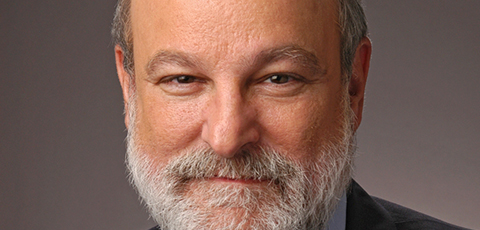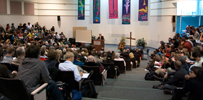Encountering the Historical Jesus: An Interview with Dr. Darrell Bock

In this short interview, Dr. Darrell Bock addresses the modern contention that there is discrepancy between the historical Jesus and the Jesus of the gospels, and gives suggestions on ways to engage fruitfully with these debates. Darrell is the Senior Research Professor of New Testament Studies at Dallas Theological Seminary. He has written over 40 books on the New Testament and culture, specializing in the gospels and the historical Jesus. Darrell is teaching The God-Man and the Gospel in the Public Square at Regent this Spring.
Can you summarize for us what is the historical Jesus debate?
There is a belief among many that the Jesus of the gospels is a construct of the early church rather than a reflection of the real Jesus. So we do not get access to the real Jesus in Scripture. The quest for the historical Jesus is an attempt to look for this figure. The attempt was rooted initially in an anti-supernatural, skeptical worldview. Others pushed back and said there was a way to show a congruence between the portrait of Jesus in the gospels and history. So the debate ranges over these distinct approaches to the question.
What is to be gained by Christians today from engaging with the historical Jesus debate?
It can be a way to make a case for Jesus without asking a more skeptical person to first accept a high view of Scripture in order to understand Jesus. That may sound like a problem for a believer, but it tries to start with where the listener is and attempts to draw them into a discussion about Jesus that uses arguments they might connect with as the starting point for conversation.
How do I deal with the fact that there are apparent contradictions between the gospels?
There are a variety of ways to deal with such questions. First, it is important to have an awareness that gospel writers have differing goals and distinct audiences, causing them to portray events from complementary (not contradictory) angles. Since the gospels are literary texts, sometimes one author addresses a scene with more brevity or compression than another gospel writer, leaving the impression of a difference. A recognition that all authors make choices and come with perspectives also opens up options for interpretation. These texts are handled on a case-by-case basis and there are a myriad of options for what is going on. Sometimes unnecessarily flat readings rule out legitimate interpretive options, and lead someone to insist on a contradiction when in fact something more complex is taking place.
How do we know the portraits of Christ in the Gospels are accurate?
This is a question that is hard to answer in a few sentences, as books of hundreds of pages are really required to make the case. For one thing, the fact that there is a core portrait, which focuses on the uniqueness and centrality of Jesus and is common to all the gospels, points to the general accuracy of the portrait as a whole. Despite the unique contribution of each gospel to aspects of who Jesus is, the thrust of each gospel places him at the center of God’s activity, a fulfillment of promise, and one to whom we must turn for relationship to God. The mix of distinctness and agreement actually points to a lack of collusion adding to a sense of authenticity.
The real answer to this question requires working with the details of these texts. Some of what is contained in the skeptical idea that the gospel texts were created and fabricated is harder to explain given the tenacity of the faith of those closest to Jesus. That faith suggests that the core theology of the earliest church was there very early. A figure like Paul who was in the locales where these events took place and whose mind changed about Jesus, also reflects the presence of this core early Christian theology. There still is no better explanation for the rise of Easter faith than that a resurrection and empty tomb was the cause, considering that there was no precedent for the belief of a resurrection in the midst of history from a Jewish perspective.
What are some starting points for bringing our faith in a historical Jesus into the public square?
The best way in is to use the resources written by people of faith about this discussion. Gaining an understanding of the skeptical arguments and the faithful responses to such claims is almost a prerequisite for such discussions. The more comfortable one is with what the positions of faith involve the better one is prepared to engage in such a conversation without being defensive or pugnacious. Another practical rule is not to get into a debate: try to engage in a way that allows for a rich conversation.




